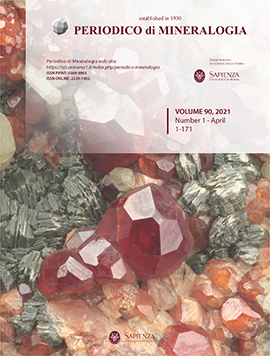Execution technique and pigment characteristics of decorative wall from 17th CE Chatta Chowk, Red Fort Complex, New Delhi
DOI:
https://doi.org/10.13133/2239-1002/16761Keywords:
Pigments, Decorative arts, Paint layer, Binders, Cinnabar, Celadonite.Abstract
The decorative wall painting from 17th CE Chatta Chowk was investigated to study the composition and characteristics of the pigment used in the decorative arts. The pigments were examined by thin cross-sections, High-Resolution X-ray diffraction (HR-XRD) analysis, Fourier-transform infrared spectroscopy (FTIR) and, portable Raman spectrometry. Besides, gas chromatograph-mass spectrometry (GC-MS) was used for identifying pigment binders. Analysis results showed the stratigraphy of the paint layer applied over fine lime plaster in a well-controlled manner mixed with binders according to the secco technique. The identified pigments for red paint layers were attributed to the mixture of hematite (Fe2O3), cinnabar (HgS) and cadmium sulfide (CdS). The utilization of admixture of mercury, iron and cadmium compounds has served as a clear evidence in order specific tones on the painted surfaces. The green paint layer was attributed to green earth (celadonite) through vibrational features, differentiating from glauconite spectra. The GC-MS analysis of the pigment showed the use of fats, waxes and drying oils as binders.


